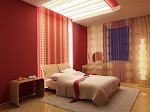 Sometimes it happens that we unknowingly put a fabric in certain category. For example, we say cotton, linen etc. are summer fabrics whereas wool, cashmere etc. are winter fabrics. Have you ever thought of the fabrics that are categorized as winter fabrics but are made from summer fabrics? Corduroy Fabric is one such fabric which is popularly called a winter fabric but is originally made from cotton- it is a cotton fabric with texture.
Sometimes it happens that we unknowingly put a fabric in certain category. For example, we say cotton, linen etc. are summer fabrics whereas wool, cashmere etc. are winter fabrics. Have you ever thought of the fabrics that are categorized as winter fabrics but are made from summer fabrics? Corduroy Fabric is one such fabric which is popularly called a winter fabric but is originally made from cotton- it is a cotton fabric with texture.
So, do you wear your corduroy skirt and pants in summers or pack all of them to be used in winters alone? Can you, in fact, wear corduroy in summers? To know this, first of all you'll have to know about the basic corduroy fabric.
What is Corduroy Fabric?
Fabric characteristically having parallel, lengthwise cords or ridges is the corduroy fabric. It looks much like twill fabric but there is a basic difference in appearance. Twill has diagonal rows while corduroy has parallel ridges. While weaving, its fibers are normally twisted resulting in long, parallel ridges. Initially, corduroy was made from cotton only. Now many other fibers, such as polyester, rayon and acrylic are also used to make corduroy fabric but essentially it remains a cotton texture fabric. Also, the modern versions of corduroy are composed of tufted cords, sometimes exhibiting a channel (bare to the base fabric) between the tufts. In essence, corduroy is a ridged form of velvet.
How is Corduroy Fabric Used?
 Corduroy fabric is mostly used for making casual to business casual clothing usually for colder climates. They are widely used for trousers but not very uncommon to be seen as skirts, jackets, caps, bags and even upholstery for chairs and sofas. In fact, the application of corduroy fabric is decided by the width of cords appearing on it. The width of the cord is usually referred to as “wale”. The Corduroy fabrics having narrow wales are generally softer to touch, and are often used for shirts, skirts, jackets or caps. Corduroy with wide wales is commonly found on pants or furniture.
Corduroy fabric is mostly used for making casual to business casual clothing usually for colder climates. They are widely used for trousers but not very uncommon to be seen as skirts, jackets, caps, bags and even upholstery for chairs and sofas. In fact, the application of corduroy fabric is decided by the width of cords appearing on it. The width of the cord is usually referred to as “wale”. The Corduroy fabrics having narrow wales are generally softer to touch, and are often used for shirts, skirts, jackets or caps. Corduroy with wide wales is commonly found on pants or furniture.
Can We Wear Corduroy in Summers?
 Although considered to be a fall/winter fabric, corduroy can even be worn in summers, of course, if you do not go by strict fashion norms. However, the fabric for summer has to be chosen very cautiously. It should be narrow wale (thin width cord), lighter weight corduroy (if superlight, it's best) in a light color, something like white, beige, pink etc. For choosing such corduroy you must know how to count the wales? Corduroy fabric’s wale count per inch varies from 1.5 to 21. However, the traditional standard falls between 10 and 12. 11-wale corduroy, that is to say 11 wales per inch, is the corduroy with narrower wales. There are pincord, pinwale, and needlecord types of corduroy from among which pincord is the finest cord with a count above 16 and has a feel that is as soft as velvet and it is superlight. So, if you find this corduroy, wear it in summers without any other consideration!
Although considered to be a fall/winter fabric, corduroy can even be worn in summers, of course, if you do not go by strict fashion norms. However, the fabric for summer has to be chosen very cautiously. It should be narrow wale (thin width cord), lighter weight corduroy (if superlight, it's best) in a light color, something like white, beige, pink etc. For choosing such corduroy you must know how to count the wales? Corduroy fabric’s wale count per inch varies from 1.5 to 21. However, the traditional standard falls between 10 and 12. 11-wale corduroy, that is to say 11 wales per inch, is the corduroy with narrower wales. There are pincord, pinwale, and needlecord types of corduroy from among which pincord is the finest cord with a count above 16 and has a feel that is as soft as velvet and it is superlight. So, if you find this corduroy, wear it in summers without any other consideration!
Read more...
























![Reblog this post [with Zemanta]](http://img.zemanta.com/reblog_e.png?x-id=d70c10b8-033b-426e-aa59-8cef0c2013b6)



![Reblog this post [with Zemanta]](http://img.zemanta.com/reblog_e.png?x-id=0f49bd90-da6e-4951-be26-a05a1c60b490)


![Reblog this post [with Zemanta]](http://img.zemanta.com/reblog_e.png?x-id=057a9d37-bbf9-4861-90ee-762a1a334e63)





























